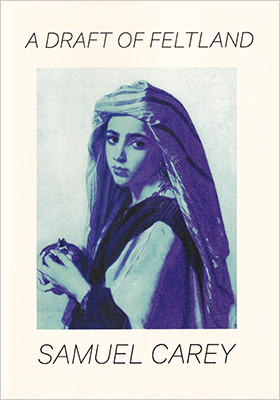Description
Chris Holdaway: Quite a few writers work to bring folk stories into contemporary experimental literature, notably Kate Bernheimer (longtime editor of The Fairy Tale Review), who stresses that fairy tales offer a particular & strange link to the history of language & storytelling – whether as a culture or from our own childhoods. What is behind you adopting this kind of material for these poems?
Ae Hee Lee: Bernheimer is right. In a way, Bedtime || Riverbed is a place where my personal history intersects with the larger “history of language & storytelling” of its fairy tales. In the nights of my childhood, my mother used to share stories about her life in South Korea and sometimes tell me Korean folk and fairy tales. These were much stranger and magical to me having grown in a different culture (in Perú). As I become older, I started seeking out western fairy tales on my own. I was fascinated to find similarities in motifs, patterns, and characters. In Korean, European, and South American stories alike I found beasts, tricksters, transformations, acts of violence, but also of love and kindness. I felt excitement in how every new story was on the borderline of the known and unknown. I look at Bedtime || Riverbed as a way I get to share this feeling with the readers.
CH: Fairy tales are often remarked upon for their (in)tense structure that packs a lot into not a lot of space; what Kate Bernheimer (again) calls “flatness” & “abstraction”. This seems to fit right with Bedtime || Riverbed, which hops along through sharp images in so many staccato phrases that feel very animated – both in the magical/creepy sense of something brought to life, but also in that these poems are full of animals (like so many folk stories). Where does your work get its structure from? What force(s) do you draw on to give it music?
AHL: The structure of these poems come from the spoken quality of stories. The story-telling. What differentiates my memories of Korean fairy tales from the Western fairy tales’ is that there was a human storyteller along the Korean stories—the darkness of the room, the dim lamplight, and in between those, my mother’s voice. I wanted to write poems that reflected the flow and rupture of these memories: a re-telling of a collage of scenes, images, and emotions that remained when explicit words were forgotten. The code-switching between the English and the Hanja is also another way of doing this; the foreign language (the English or the Hanja) interrupts, but it also expands the music.
CH: There is a little bit of explanation inside the book, but I wanted to give you some more space to talk about the one of the most notable features in Bedtime || Riverbed – the use of Hanja characters. There are many questions someone unfamiliar might ask. What is the history of their adoption into Korean? Does it reflect a relation of cultural imperialism between China & Korea that you’re trying to interrogate? Our contemporary western view probably places Korea as a minor player under China’s regional power, but it hasn’t always been that way. Finally, what can you briefly say about their particular function in these poems?
AHL: Hanja are Classical Chinese characters representing ideas adapted into the Korean language with Korean pronunciation. They are logographs (like some Egyptian hieroglyphics): a single written character can mean/represent a complete idea, word, or phrase.
The Classical Chinese character system was introduced into Korea during the Tang Dynasty, a little after Buddhism. There was definitely cultural imperialism happening, as the Korean kingdoms of Goguryeo and Balhae were regarded as tributary states. There were wars, kingdoms were dissolved, others surfaced, and Hanja kept being used in the region, being the sole means of writing until King Sejong invented a new alphabet called Hangul during the 15th century.
Languages are constantly evolving. Hanja are Classical Chinese characters, but they are not part of the Chinese language, because Hanja are used in Korea in a way unique to Koreans. It is an important differentiation. Chinese have reformed Classical Chinese Characters into more modernized versions of simplified Chinese script just in the 20th Century.
When writing Bedtime || Riverbed, rather than saying I was focusing on interrogating cultural imperialism, it’s more accurate to say I just couldn’t take off my mind from how these languages came to be, how they were shared, and how they became unique to their regions. In a way parallel to the very fairy tales and stories that the chapbook re-tells, it’s hard to say they could ever be totally static objects that can be pinned down for me. Ultimately, I was drawn to the potential and flexibility of Hanja characters. Oftentimes, they possess more than one definition, so they tend to be context driven, gaining their meaning in relation to the surrounding text. I thought it would be interesting to juxtapose them along English, an entirely different kind of language, with its own sets of ambiguity and sounds. Hanja would translate, mistranslate, add, negate, complicate.
I’m not fluent in Hanja. Even the majority of Koreans who lived their whole lives in Korea are not fluent in it; Hanja characters are no longer as commonly used or studied as Hangul. However, Hanja still exist within the Korean language etymologically, like how some Latin roots manifest themselves within Spanish and English. I, who was born in South Korea, but grew up in Peru and studied in the United States, can see how my Korean family, stories, and language still exist within my identity in a similar way. I can see how different languages and memories have interacted and produced a new set of stories.




